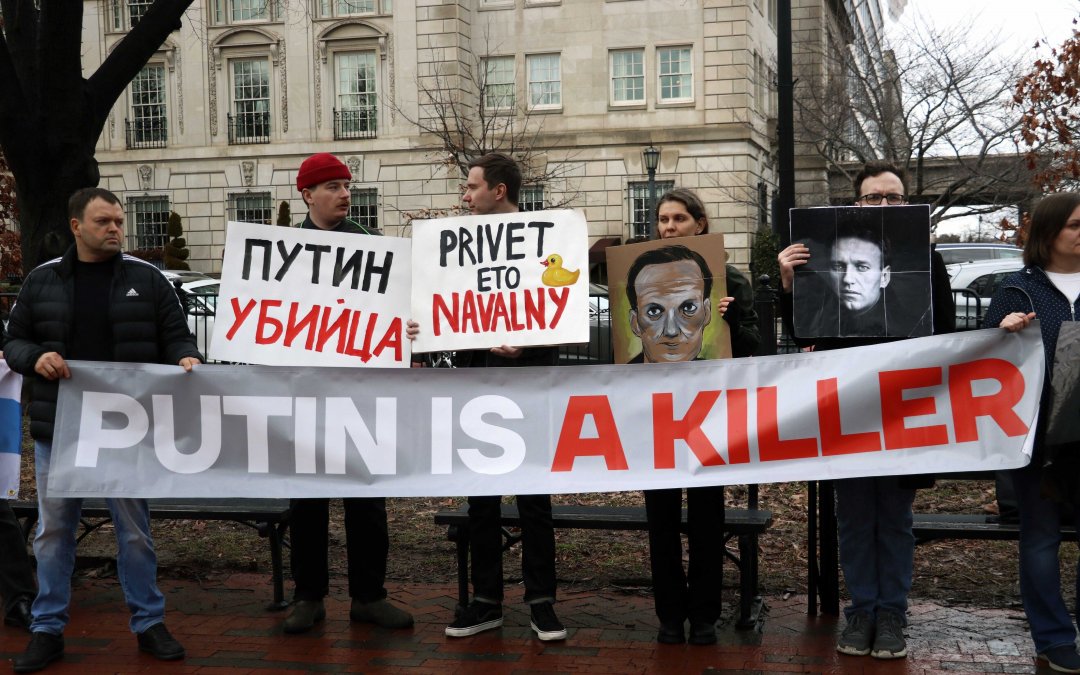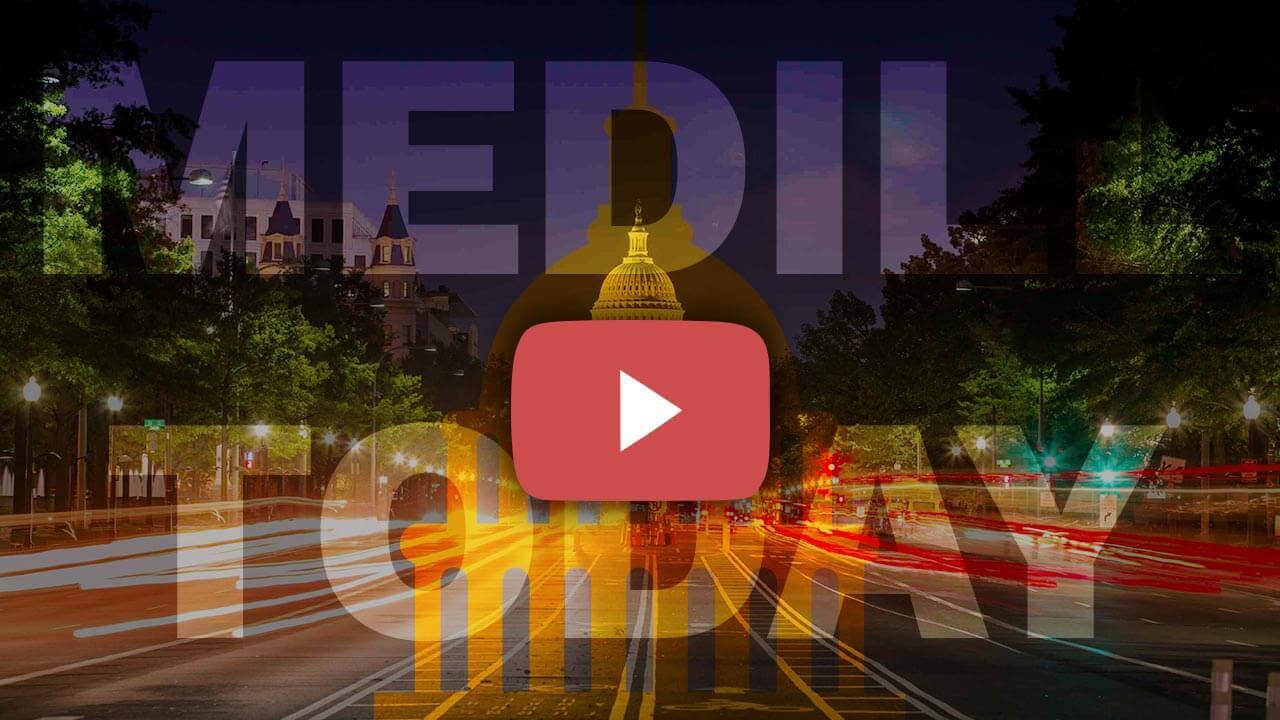WASHINGTON — A few dozen Russian immigrants in Washington gathered outside the White House Sunday to honor the memory of opposition leader Alexei Navalny, who died in a Russian prison one year ago.
As a show of solidarity, recordings of Navalny’s past speeches at rallies played through a speaker in the background.
“We are ready to push this Putinist vacuum out of politics and replace it with ourselves,” Navalny’s voice rang out from a speaker. “Every day, do something to make things harder for the authorities and better for the people. Do something to weaken this regime.”
At a time when President Trump has made concessions to Putin to try to negotiate a peace in Ukraine, Russians in several U.S. cities gathered to remember Navalny and protest Russia’s authoritarian tactics.
Among those attending the demonstration was Dmitry Valuyev, president of the nonprofit organization Russian America for Democracy in Russia. He said one of the event’s goals was to inform Americans about the brutal realities of Vladimir Putin’s regime, especially under Donald Trump’s new administration.
“The Russian government does not respect diplomacy. The Russian government fears strength,” Valuyev said. “We live here now, and it is our duty to remind the administration, to remind Congress, to remind Americans of what the Putin regime is, of who Putin is. To remind them every time someone tries to reestablish dialogue or restore relations.”
After Valuyev’s speech, the crowd began chanting, “Russia without Putin. Never forgive, never forget,” in both Russian and English.
Alexei Navalny was poisoned with the nerve agent Novichok in Russia in 2020. He was transported to a hospital in Germany, where he survived, and later made the decision to return to Russia. In the winter of 2021, he was arrested upon crossing the border. He faced multiple criminal charges, and his combined prison sentence exceeded 30 years.
February has been a tragic month in modern Russian history. On February 24, 2022, Russia launched its full-scale invasion of Ukraine—a fact protesters highlighted with their posters. Some attendees also wore badges reading, “I am Russian, and I Stand with Ukraine.”
In addition to Navalny, another opposition leader, Boris Nemtsov, was assassinated in February. A potential successor to Russia’s first president, Boris Yeltsin, Nemtsov was ultimately sidelined in favor of Putin. On February 27, 2015, he was shot in the back near Red Square.
Given this string of February tragedies, several demonstrators said, “In the beautiful Russia of the future, there will be no February.”
In August 2024, under President Biden’s administration, Russia and the United States staged the largest prisoner exchange between East and West since the Cold War, with Russia and Belarus jointly releasing 16 people. It remains unclear how political prisoners in these countries will fare under the Trump administration.
Former U.S. Ambassador to Georgia Ian Kelly, who served on the board of the Free Russia Foundation, said he would be surprised if the White House initiated another prisoner swap, suggesting that European governments would likely push for it instead.
“That’s not to say that Washington is monolithic,” Kelly said. “I don’t really anticipate there being a big push from the White House, but there might be some push from Congress. You have people like [Republican] Senator [Roger] Wicker [of Mississippi], who was on the Helsinki Commission and has been very vocal about human rights abuses in Russia. There are also members of the Democratic Party who are very keen to see political prisoners released.”
Earlier this month, three political prisoners were released in Belarus, one of whom was a U.S. citizen. Belarus remains under the authoritarian rule of Alexander Lukashenko and heavily influenced by Russia.
At Sunday’s protest, demonstrators carried a variation of the Russian flag without the red stripe, which symbolizes blood and war. In its place was a second white stripe.
Mikhail Dobrolyubov, a physicist holding one of these flags, said that while the Russian flag once stood as a symbol of opposition to the Soviet Union, it no longer represents a free Russia.
“After everything Russia has done under this flag—in Ukraine, in other places, in Moldova, in Georgia, but first and foremost in Ukraine—I believe that a free, democratic Russia cannot continue to use this flag,” Dobrolyubov said.
One protester, Nabi Aganabiyev, moved to the U.S. two and a half years ago and called it the only country “where human rights and freedoms are respected and upheld.” He emphasized that demonstrations outside the White House should not only remind Americans of the horrors of the Russian regime but also support Russians who cannot freely express themselves at home. However, he was disappointed by the low turnout.
“People, he [Putin] has been in power for 25 years, he sits on the throne. Don’t forget that,” Aganabiyev said. “Alexei Navalny wasn’t afraid to speak about it, Nemtsov wasn’t afraid to speak about it. They gave their lives, and we can’t even spare ten minutes to come to a protest and show the White House that we are not just 20 or 30 people, that we are thousands, and that we are not afraid.”
Some protestors noted that since Navalny’s death, the Russian opposition had significantly weakened. Yuri Petrenko, a Russian attendee, held a poster showing a gravestone with Navalny’s photo and the dates of his life. He admitted that he had never imagined the politician would die in prison and now struggles to see who could replace him.
“For me, Navalny was the main figure of the political opposition in Russia,” Petrenko said. “Without Navalny, things are really difficult for Russia.”
At least one Belarusian joined the demonstration, including Milava Baburina. She had wanted to leave Belarus after the 2020 protests against the presidential election, which declared Lukashenko, who has ruled the country since 1994, the winner. Her brother is currently a political prisoner in Belarus.
“I believe that freedom in Russia also means freedom for my country,” she said. “These two dictators [Putin and Lukashenko] are tied to each other. If one falls, it will be easier to get rid of the other.”
In Russia, people who oppose Putin have continued to face punishment. According to the independent Russian watchdog OVD-Info, more than 40,000 people were detained at protest rallies in Russia between 2020 and 2024.
During Sunday’s demonstration, organizers repeatedly explained safety protocols, which were reminiscent of the instructions given at protests in Russia about what to do in case of arrest. Only this time, they warned attendees about what to do if ICE officers showed up. Do not give your names or IDs, and just head home.


